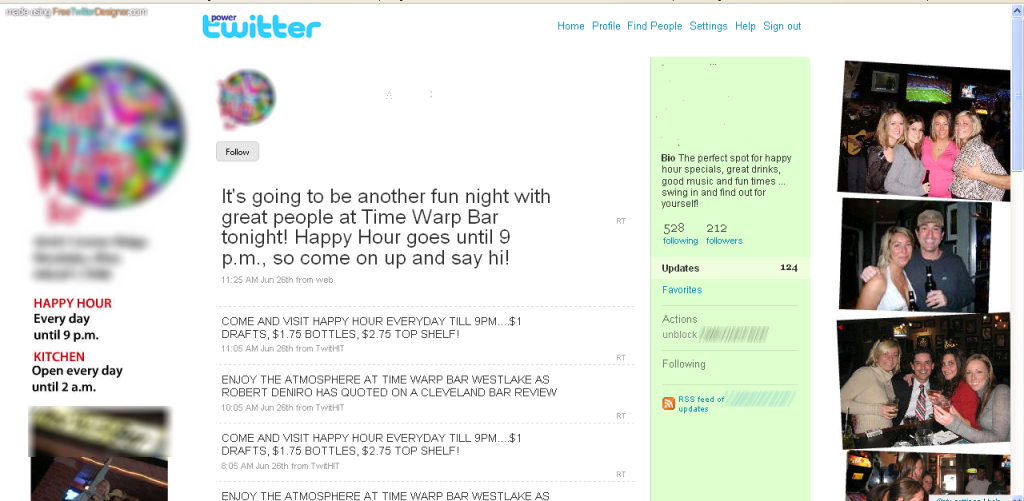I’m a nice person. My friends all think so. My sweetie tells me so on practically a daily basis.
So, just to warn you, this blog post is uncharacteristically, well, mean.
Please understand that my heart’s in the right place. I’m not writing this to be mean. I’m writing it so that you can learn from other people’s mistakes (and maybe just a little bit to vent).
As part of my Twitter routine, once a week or so, I go through all the email notifications I have gotten that week letting me know about all my new followers. I go through each one individually, and check them out, to decide if I’m going to follow them back, or not. I have pretty set criteria for who I’ll follow, and who I won’t.
Last week, while going through my new Twitter followers, I found one that had done so many things wrong, I just had to share. (personal details have blurred to protect the innocent).

Let’s start with what they’ve done right, because it’s not all bad:
- Personalized background
- Website URL, bio and avatar
The not-so-good:
- Every single tweet is in all caps (in case you were not aware, all caps on the ‘net is the equivalent of shouting in real life)
- Follower-to-followee ratio: They are following significantly more people than are following them. Not usually a great sign, because anyone can follow a great deal of people in a short amount of time, but you have to prove some worth to get people to follow you.
- They recycle the same 4 Tweets. I’m not even going to say why that’s bad.
- There are no personal Tweets. Everything is business. Now, I get that they are a business, and it’s their primary aim to get business in through the door, and that’s all okay. But people are interested in seeing what goes on behind the scenes–maybe something is going on with one of the bartenders, the band–things that are a bit more personal in nature.
- Geographical location: I live in Vancouver, BC, Canada. They are located in Ohio. Why are they following me? If I was traveling to Ohio, and wanted to go to a bar, I’d be looking for them. But otherwise, why? I’m not their market.
One last please don’t do this/rant: if I follow you, I don’t mind if you send me an auto response with your website. But please don’t send me an auto response with your website trying to sell me something. I hardly know you. Let’s get to know each other a little before you try to sell me something.
K.Thx.Bye!












 Yesterday, my son graduated from Kindergarten. Beside the excitement of having a son who is going into grade one, I’m also super jazzed that it’s summer vacation. I have often complained that his teachers spend more of his waking hours with him than I do, but summer vacation is going to change all that.
Yesterday, my son graduated from Kindergarten. Beside the excitement of having a son who is going into grade one, I’m also super jazzed that it’s summer vacation. I have often complained that his teachers spend more of his waking hours with him than I do, but summer vacation is going to change all that.








